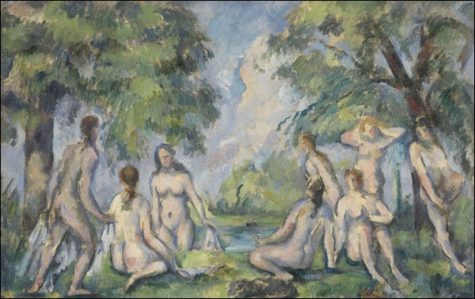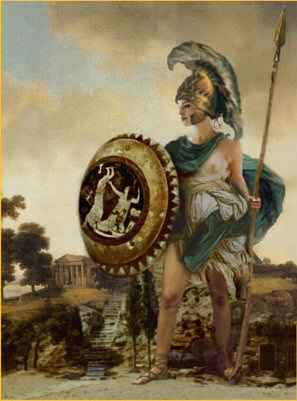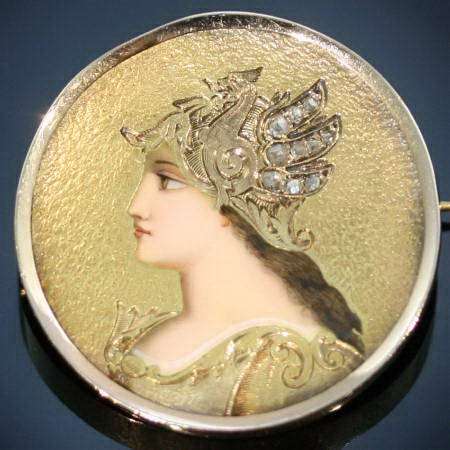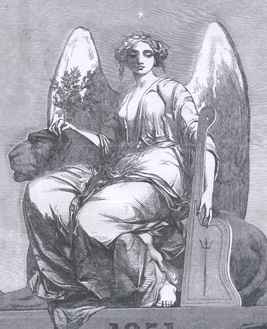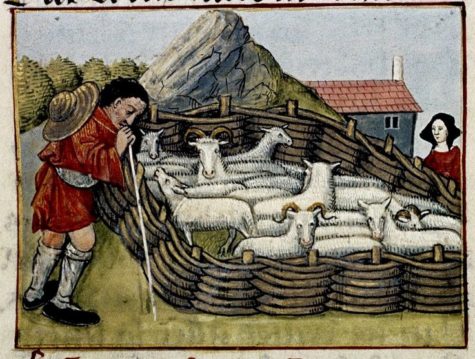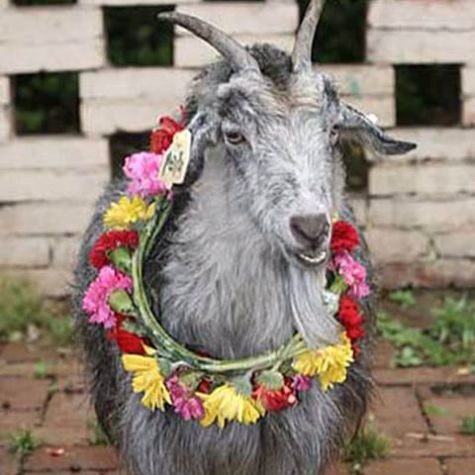Roman Festivals
In ancient Roman culture, felicitas is a condition of divinely inspired productivity, blessedness, or happiness. Felicitas could encompass both a woman’s fertility, and a general’s luck or good fortune. The divine personification of Felicitas was cultivated as a goddess.
Although felicitas may be translated as “good luck,” and the goddess Felicitas shares some characteristics and attributes with Fortuna, the two were distinguished in Roman religion. Fortuna was unpredictable and her effects could be negative, as the existence of an altar to Mala Fortuna (“Bad Luck”) acknowledges. Felicitas, however, always had a positive significance.
In Ancient Rome
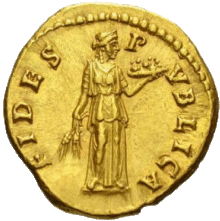 Felicitas had a temple in Rome as early as the mid-2nd century BC, and during the Republican era was honored at two official festivals of Roman state religion, on July 1 in conjunction with Juno and October 9 as Fausta Felicitas.
Felicitas had a temple in Rome as early as the mid-2nd century BC, and during the Republican era was honored at two official festivals of Roman state religion, on July 1 in conjunction with Juno and October 9 as Fausta Felicitas.
Felicitas continued to play an important role in Imperial cult, and was frequently portrayed on coins as a symbol of the wealth and prosperity of the Roman Empire. Her primary attributes are the caduceus and cornucopia. The English word “felicity” derives from felicitas.
On July 1 and October 9, Felicitas received a sacrifice in Capitolio, on the Capitoline Hill, on the latter date as Fausta Felicitas in conjunction with the Genius Publicus and Venus Victrix. These observances probably took place at an altar or small shrine, not a separate temple precinct.
The Acts of the Arval Brothers (1st century AD) prescribe a cow as the sacrifice for Felicitas. Pompey established a shrine for Felicitas at his new theater and temple complex, which used the steps to the Temple of Venus Victrix as seating. Felicitas was cultivated with Honor and Virtue, and she may have shared her shrine there with Victory, as she did in the Imperial era as Felicitas Caesaris (Caesar’s Felicitas) at Ameria.
Celebrating Felicitas Today:
“Felicitas’ themes are kindness, charity, love, romance, joy, success and luck. Her symbols are greetings (greeting cards). This Roman Goddess brings happiness, success, and good fortune whenever someone salutes another with good words or amiable deeds. She comes to us today to energize late fall and early winter with the transformational power of kindness.
Her festival day gives us an opportunity to shower anyone and everyone with cheerful trinkets, kind acts, and gentle words to lift people’s spirits. By looking for Felicitas for help, we can bring joy to people who might otherwise be feeling a case of autumn blues.
Here is an idea:
Look for, or make, some humorous greeting cards to send to folks you know would appreciate the thought. Lay your hands on them and invoke Felicitas’s blessings in any way that feels right.
To improve the effect further, anoint the cards with rejuvenating aromatic oils that match the recipient’s needs (such as pine for money, rose for love or peace, cinnamon for luck, sandalwood for health, and lavender to combat depression). This way, when they open that card, the magic and the aroma will be released together to bless, energize, and bear Felicitas’s greetings along with your heartfelt wishes!”
Sources: 365 Goddess, and Wikipedia
In ancient Rome on July 7th, the Feria Ancillarum or Festival of Handmaids was held. This was the maids’ day out, when the maids of Rome were beyond the control of their mistresses.
Also known as the Caprotinae, when free and slave women made offerings to her beneath wild fig trees outside Rome’s city limits, this feast day was in honor of Juno Caprotina, Juno of the Wild Figs. Fig trees were venerated, with feasting beneath them in honor of Caprotina, an aspect of the Goddess Juno.
In this aspect of the goddess, Juno is seen as dressed in goatskins and driving a chariot pulled by goats. Enslaved women made up a large proportion of her devotees.
Poplifugia was a Roman festival on July 5. It means “flight of the people.” The origin of Poplifugia is not known. Two explanations are given by H.H. Scullard:
- the people fled when Romulus disappeared from mortal sight during a tempest
- the flight of the Roman people after the sack of Rome by the Gauls
There doesn’t seem to be much information about this festival. It took a fair amount of digging, but I was able to come up with a little something more about the Poplifugia. Here’s what I found:
The Festivals of the Poplifugia and the commemoration of Romulus are celebrated on July 5 and July 7, respectively. These two festivals are thought to be a continuation of the same festival, as it was customary for the Romans to have festivals that ran on several days but skipped the even-numbered days because they were considered ill-omened in Rome.
There was also a Rumilia festival that might have been celebrated at the same time.
Although much has been written on this topic, it is not well understood, because the Romans had an extremely conservative religion, in which they continued to do rituals, but they did not remember what they were for, and much of the information about their religion has been lost or deliberately destroyed.
The Poplifugia was a ritual in which someone was chased out of the Regia, or “King’s House”, actually the formal residence of the Sacred King of Rome.
This early July date corresponds approximately to the time of slaughter of livestock in Mediterranean countries which have a dry season during most of the summer during which there is no fodder for cattle.
Its name which is interpreted to mean, “The Flight of the People”, may refer to the sacking of Rome by the Gauls in 390 BC. However, it is impossible not to notice that the word popli- in Poplifugia, and which is interpreted as meaning `people’ is very similar to the word popa which is the Latin word for the attendant who actually slaughtered the animals at a sacrifice, that is, it was the job of the popa to hit the animal in the forehead with an ax which stunned it. Someone else cut the animal’s throat so that it bled to death, and the whole operation was organized by a priest who spoke the religious formulas and directed everyone on what they should do.
If the festival was originally called a *Popafugia (“fleeing of the popa or axeman”), it would be even more completely in line with the Bouphonia, as it was performed in classical Greece. Nevertheless, the connection has been made between the Poplifugia and the Greek Bouphonia and both are thought to embody the myth of the killing of the first cow, which makes up the Indo-European creation myth, known as the Primal Cow Creation Myth.
Found at: Associated Content
- Color of the day: Green
- Incense of the day: Clove
June 11 is the Festival of Mater Matuta, an old Italian goddess of the dawn who was the goddess of the dawn and the protector of growing crops and growing children. Today a free woman in the first year of her marriage would make offerings of toasted cakes to the goddess, and ask for blessings on her nieces and nephews. The Romans eventually made equivalent to the dawn goddess Aurora, and the Greek goddess Eos.
Aurora, known among the Greeks as Eos, is honored on this day. It is she who opens the gates of heaven each day so that Helios may ride his chariot across the skies. Her tears create the morning dew. Try greeting Aurora today as she opens the gates of heaven. Walk barefoot through the grass, feeling her tears upon your skin. Connect with her eternally youthful soul.
Then, as Helios begins his journey across the sky, settle yourself in a quiet place outdoors and let the light bathe your face for a short time as you meditate on the beauty you bring into your world each day. Once you finish your meditations, pay tribute to Aurora for her task of opening the gates for each new day to bring light in the world. Take with you her beauty and grace as you go about your day and tasks.
By Winter Wren
The Festival of Bellona took place on June 3rd in Campus Martius, near the Temple of Bellona. This was largely just a huge feast in honor of Bellona who had helped them in war. This festival was also a celebration for the dedication of the Temple of Bellona.
One source that talks about the dedication of the Temple of Bellona on June 3rd is in Ovid’s “Fasti”, a six book poem the Roman poet Ovid had published around 8 AD. This quote is found in Ovid’s 6th and final book:
“When two dawns are past, and Phoebus has risen twice,
And the crops have twice been wet by the dewfall,
On that day, they say, during the Tuscan War, Bellona’s
Shrine was consecrated, she who always brings Rome success.”
This goddess did not play a significant role in either myth or legend, and her worship appears to have been promoted in Rome chiefly by the family of the Claudii, whose Sabine origin, together with their use of the name of Nero, has suggested an identification of Bellona with the Sabine war goddess Nerio.
Her temple at Rome, dedicated by Appius Claudius Caecus (296 B.C.) in fulfillment of a a vow during the Third Samnite War with the Samnites and Etruscans, stood in the Campus Martius, near the Flaminian Circus and Porta Carmentalis (the Carmenta gate), and outside the gates of the city. It was there that the senate met to discuss a general’s claim to a triumph, and to receive ambassadors from foreign states. In front of it was the columna bellica, where the fetialis ceremony of declaring war was performed, in which a spear was cast against the distant enemy.
Note:
This native Italian goddess should not be mistaken for the Asiatic Bellona, whose worship was introduced into Rome apparently by Sulla, to whom she had appeared, urging him to march to Rome and bathe in the blood of his enemies. See Day of Blood
~Information compiled from various sources.
On 10 May, and again on 31 May, the Roman legions at Duro Europa celebrated the Rosalia. This again connects the flowers of Spring with rituals for the dead, only this time the rituals were performed by military units for their fallen comrades rather than for family members. We learn of this celebration first with a military calendar from Syria.
We do not know if the Rosalia was celebrated on the same dates by other legions throughout the Roman Empire, but we hear descriptions of the Rosalia in other texts suggesting that the Rosalia was common in the Roman army. Since the military calendar differs from other Roman calendars, it is possible that it represents a standard used among all legions. Then again each legion may have had its own schedule of festivals. However, since the month of May was dedicated to the dead, with Lemuria, it would seem reasonable that a military equivalent fell within the same month.
Here’s what we do know:
At the center of every Roman military camp there was a small shrine, the saculum. Inside this shrine the military standards were kept; these were the legion’s eagle and other standards for the maniples, cohorts, or vexilia. As with Roman temples, an altar was placed in front of the sacullum. At Rosalia the standards were brought forth and placed around the altar. They were crowned with wreaths of roses and a supplication, or thanksgiving, was performed before them. Beyond that one detail, nothing else is certain about this military ritual. But from its nature we can surmise something of its intent.
When someone died far from home, whether while serving in the army or away at sea, and thus was unable to be buried by his family, a cenotaphium would be erected as a dwelling place for his soul. His Lar (soul) was called three times and invited to enter the cenotaphium. For example, when Aeneas meets his deceased friend Deiphobus in the Underworld, he says,
“Then I myself on the Rhoetean shore erected a hollow tomb, and with loud voice thrice called upon thy spirit (Virgil, Aeneid).”
On the Nones (7 May) the tombs of ancestors were decorated with wreaths of roses. With their red hues, the roses were offered to the dead as a gesture of reviving them, or at least of remembering how they were once while still alive. The red roses were the flowers of Venus, and they were a reminder of the Garden of Venus where the souls of the dead, as animae, would dwell as Her children, like little cupids living in the Blessed Isles. So offering roses to the Manes was a way of wishing their safe journey on to the Garden of Venus.
There is not much doubt that the Rosalia was intended to honor the military dead. The standards were being adorned with roses in the same manner as tombs and cenotaphs. With the Romans I think you would also have to consider that they thought of the standards as cenotaphia that carried the Lares of the legion, who were the spirits of their fellow soldiers, into battle with them. This would also explain why the loss of the eagles would be taken as such a tragedy by Romans. Perhaps it also explains why the second century Christian writer Tertullian criticized this veneration of the standards.
The Rosalia was continued, however, even after the Roman army adopted Christianity. Something of the Rosalia remains even today in the parading of the colors of modern armies, where they are decorated with battle ribbons to commemorate where a unit has fought, as well as all the men who have served and died with the unit in the past. Laying a wreath of roses on the Tomb of the Unknown Soldier on Memorial Day is an echo of the Rosalia once performed by Roman legions.
Found at: Patheos
The Lemuria, the festival in honor of the Lemures, the spirits of dead family members who wander the earth on these three spring nights (May 9, 11, and 13).
The Lemuria is held on odd-numbered days because even-numbered days are considered unlucky. It is a festival designed to honor the Lemures, they are regarded as baleful spirits of the dead who died violent or otherwise untimely deaths.

At midnight, the Paterfamilias (head of the household) arises and dresses with no knots, buckles, or other constricting items on his person (thus he is barefoot). He makes the sign of the mano fico with his hands (a fist with the thumb placed between the index and middle fingers; a sign of good luck and fertility) and then washes his hands in pure water. He then walks through the house, spitting out nine black beans, being careful not to look behind him as the lemures accept the beans as a sort of ransom for the living members of the household. As he spits out each one, he says
“With these beans I redeem me and mine.”
Once all nine beans have been accepted by the lemures and the entire house walked through, the Paterfamilias then washes his hands again, clashes two vessels of bronze together, and nine times says
“Ghosts of my fathers, be gone.”
(Manes exite paternae.)
Source: Novaroma
According to many pagan calendars, May 8th is listed as “The Festival of Mens , the Roman goddess of mind and consciousness.” I did not, however, find any information on Mens or on a festival of Mens – what I did find was this small excerpt at Wikipedia:
By a process of folk etymology, the Romans could have confused the phones of her foreign name with those of the root men- in Latin words such as mens meaning “mind”, perhaps because one of her aspects as goddess pertained to the intellectual. The word mens is built from the Proto-Indo-European root *men- ‘mind’ (linked with memory as in Greek Mnemosyne; memory, remembrance, recollection, Manush in Sanskrit meaning mind ).
Because of this, I can only assume that the Festival of Mens is actually a Festival of Minerva, Goddess of wisdom and learning, meditation, inventiveness, accomplishments, the arts, spinning and weaving, and commerce. Minerva was identified with Pallas Athene, bestower of victory, when Pompey the Great built her temple with the proceeds from his eastern campaigns.
The Romans celebrated her festival from March 19 to March 23 during the day which is called, in the neuter plural, Quinquatria, the fifth after the Ides of March, the nineteenth, an artisans’ holiday. A lesser version, the Minusculae Quinquatria, was held on the Ides of June, June 13, by the flute-players, who were particularly useful to religion.
Source: Wikipedia
The Bona Dea had a festival on the first of May that commemorated the date her Aventine temple was founded. Its date connects her to Maia; its location connects her to Rome’s plebeian commoner class. At the ceremony, prayers were made to Her to avert earthquakes. She also had a secret festival, attended only by women, that took place over the night of the 3rd and 4th of May.
The rites are inferred as some form of mystery, concealed from the public gaze and, according to most later Roman literary sources, entirely forbidden to men.
On this night the festival was held in the house of the consul (the chief elected official), and no men were allowed. This taboo extended even to paintings or statues of men, which were required to be covered during the rites—and one assumes the consul himself crashed at a friend’s place for the night. The Vestal Virgins officiated, led by the wife of the consul (probably symbolic of the ancient Queen, on whom fell certain sacred religious duties), and the house was decorated like a temple with garlands of leaves and flowers of all kinds, except for myrtle of course, and the women wore wreaths of grape leaves.
A great jar of wine was placed in the room, though it must be referred to as “milk”, and the jar itself was called a mellarium, or “honey jar.” After making libations to the Goddess, music was played and the women drank and danced.
In the Republican era, Bona Dea’s Aventine festivals were probably distinctly plebeian affairs, open to all classes of women and perhaps, in some limited fashion, to men. By the Late Republic era, Bona Dea’s May festival and Aventine temple could have fallen into official disuse, or official disrepute.
The goddess also had a Winter festival (see it here), it was held in December during the Faunalia, and was referred to as the sacra opertum, (“the secret or hidden sacrifice”): at this ritual sacrifices were made for the benefit of all the people of Rome, something proper to the realm of a mother or Earth Goddess who is concerned with the well-being of all of Her children.
Ritual for Bona Dea:
- Color: Green
- Element: Earth
- Offerings: Leave a pig-shaped cookie out for the wild things.
- Daily Meal: Soups or stews, preferably with herbs. Herbal tea.
Altar:
Upon a green cloth set five candles in different colors, a chalice of milk mixed with honey, incense of sandalwood and myrrh, the figure of a snake, a plate of cookies shaped like pigs, a pot of medicinal herbal tea, cups, and pots of dried herbs gathered throughout the year.
Invocation to Bona Dea
O Bona Dea,
Good Goddess of the Earth
Whose name is mystery,
Whose name is a hundred names,
Whose spirit lives in us all
And in every goddess who touches the soil,
And in every mortal who sprang from the clay,
Be with us on this day!
You have made the Earth spring forth
With many green goods for us,
Not merely those with which me feed our bellies,
But also those which heal our bodies.
Lady who heals us, godmother of Hygeia,
Daughter of Faunus who tracks in the wild,
We find your gifts both in our gardens
And on the wild paths where you have trodden.
We see the healing herbs springing up
In each of your passing footprints,
And we are grateful for our lives.
O Bona Dea,
Good Goddess of the Earth
Whose name is mystery
But whose gifts are so concrete,
We revere you and ask that you bless this day
Your plants which you have so generously given us,
That we may always be healed
And always help to heal others.
The names of the herbs that were collected and placed on the altar are called out one by one, in this manner:
“For the power of Rosemary, we are grateful!”
All reply in turn, “We are grateful!”
Pass the tea and cookies and eat them.
Sources: Pagan Book of Hours and Wikipedia
Also called The Parilia, this festival is dedicated to the Another festival to Pales, goddess of herds. In ancient Roman religion, Pales was a deity of shepherds, flocks and livestock. Regarded as male by some sources and female by others, Pales can be either singular or plural in Latin, and refers at least once to a pair of deities.
During these festivals, ritualistic cleansing of sheep/cattle pens and animals would take place. There are two dates for this festival, one is April 21, and the other on July 7. The festival in April was for smaller livestock, while the one in July was for larger animals.
The festival, basically a purification rite for herdsmen, beasts, and stalls, was at first celebrated by the early kings of Rome, later by the pontifex maximus, or chief priest.
The Vestal Virgins opened the festival by distributing straw and the ashes and blood of sacrificial animals. Ritual cleaning, anointment, and adornment of herds and stalls followed, together with offerings of simple foods.
Shepherds swept out the pens and smudged the animals and pens with burning sulfur. In the evening, the animals were sprinkled with water, and their pens were decorated with garlands. Fires were started, and in were thrown olives, horse blood, beanstalks without pods, and the ashes from the Fordicalia fires. Men and beasts jumped over the fire three times to purify themselves further, and to bring them protection from anything that might harm them (wolves, sickness, starvation, etc.). After the animals were put back into their pens the shepherds would offer non-blood sacrifices of grain, cake millet, and warm milk to Pales.
Another description of this Festival from Nova Roma is as follows:
The Parilia is both an ancient agricultural festival sacred to Pales and the birthday of Eternal Roma Herself. The sheep-fold is decorated with greenery and a wreath placed on its entrance. At first light the fold is scrubbed and swept, and the sheep themselves are cleansed with sulfur smoke. A fire is made of olive and pine wood, into which laurel branches are thrown; their crackling is a good omen. Offerings are made of cakes of millet, other food, and pails of milk.
A prayer is then said four times to Pales (while facing east), seeking protection and prosperity for the shepherd and his flocks, forgiveness for unintentional transgressions against Pales, and the warding off of wolves and disease. The shepherd then washes his hands with dew. Milk and wine is heated and drunk, and then he leaps through a bonfire (and possibly his flocks as well).
Day of Pales Ritual
From the Pagan Book of Hours, we have a modern day ritual for the Day of Pales.
- Color: Sand-colored
- Element: Earth
- Altar: Upon a sand-colored cloth set a man’s right shoe and a woman’s left shoe, side by side, with a shepherd’s crook between them, and small figures of goats and sheep.
- Offerings: Work in the barn with livestock. Do some chore or work-task that you were taught was inappropriate for your gender.
- Daily Meal: Goat. Lamb or mutton. Coarse bread. Soup or stew. Greens.
Invocation to Pales
Hail, Keeper of Flocks and Herds,
Ass-headed god/dess, you who are
Both male and female,
Both god and peasant,
Patron of those who must dirty their hands,
Beloved of the working man and woman,
You who do not play favorites,
Trickster who loves a good joke,
Lord of the dry land between the rivers
Where your flocks graze on scrub
And the people’s blood flows like water
In their everlasting feud,
Come to us and show us life
Through your crooked ass eyes!
Hail, Keeper of Flocks and Herds,
Lady/Lord of the crook and sandals,
You show us that roles
Are meant to be transgressed,
That work can be radical,
That being bound to the labor of the Earth
Does not have to make one heavy.
We need your humor, divine ass!
We need your braying laughter to echo
Over the desert and through our hearts,
And to watch you tip the balance of power
Like a child tips an apple cart.
Hail, Keeper of Flocks and Herds!
(After the invocation, go to the barn, or to a local farm. Hoofed livestock should be given treats on this day, in honor of Pales.)


